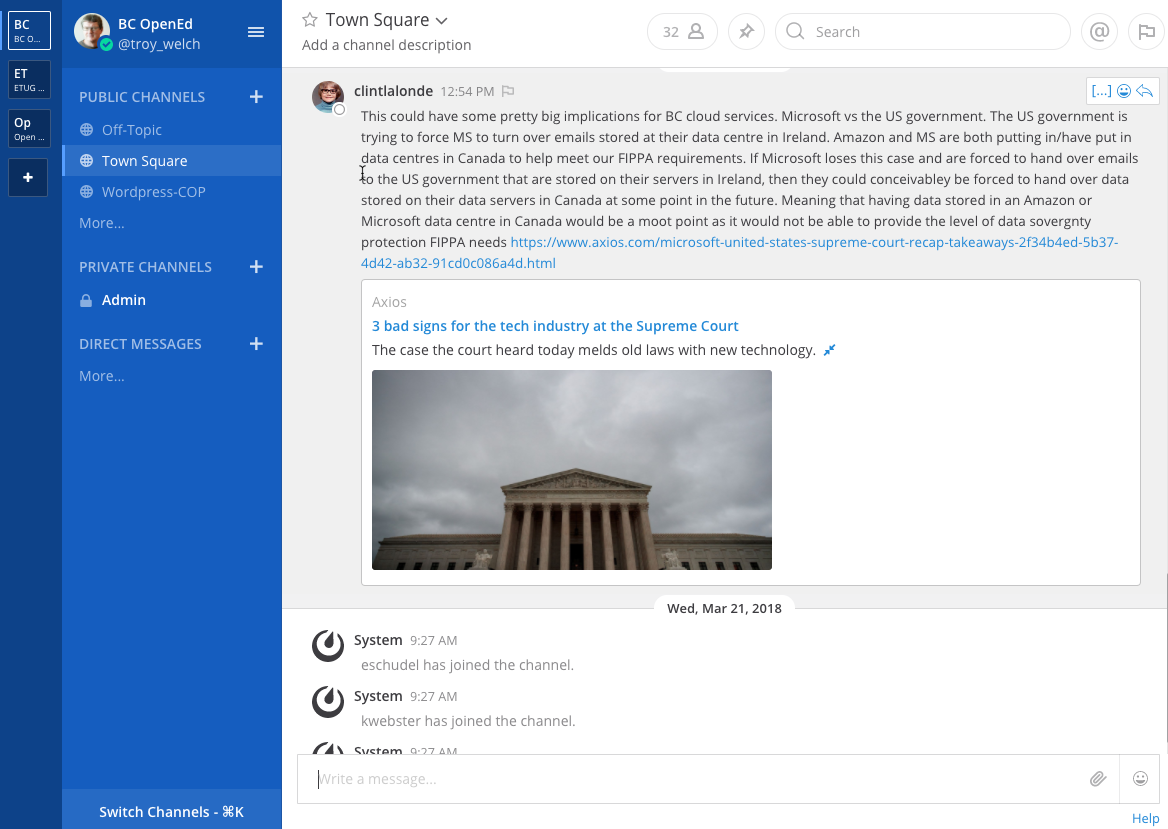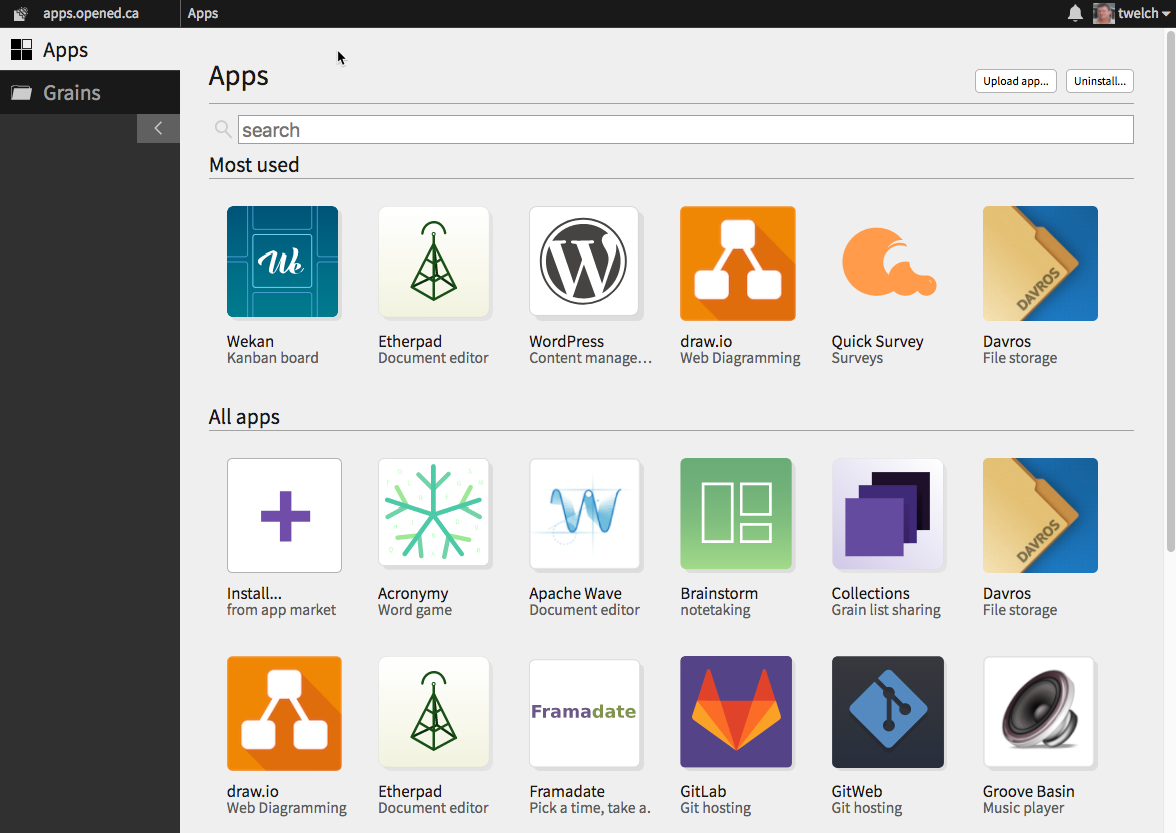[Feature Article] BC Open Educational Technology Collaborative (OpenETC) Resources
Contributed by Troy Welch, TRU
 Inspired by their belief in open education and their love of educational technology, over the past few years a dedicated group of BC Educators have formed the BC Open Educational Technology Collaborative (OpenETC). The OpenETC banner flies under the tagline “Free range Edtech” and is describe as:
Inspired by their belief in open education and their love of educational technology, over the past few years a dedicated group of BC Educators have formed the BC Open Educational Technology Collaborative (OpenETC). The OpenETC banner flies under the tagline “Free range Edtech” and is describe as:
“…a community of educators, technologists, and designers sharing their expertise to foster and support open infrastructure for the BC post-secondary sector. No contracts or agreements are required to join us, just a willingness and ability to actively participate in our collective endeavor to:
- encourage technological autonomy and provide ways for students, faculty and institutions to own and control their own data.
- lower the barrier to participation on the open webfor BC faculty and students.
- provide a more sustainable ed tech infrastructure to BC higher education that gives institutions more control over their tools. Institutions are currently at the mercy of vendor pricing, upgrade cycles, and exit strategies. This puts institutions at a certain degree of risk when there are changes to any of the variables beyond their control. Open-source approaches reduce the risk to institutions in this regard.
- assist BC faculty in evaluating and making informed pedagogical decisions around open-source teaching and learning applications.”
https://opened.ca/
One of the many exciting aspects of the collaborative is the tools and resources they put in place for collaborative members. What follows is an outline of three services currently available.
Mattermost
 Mattermost is described as an:
Mattermost is described as an:
Open source, private cloud Slack-alternative: Workplace messaging for web, PCs and phones. https://about.mattermost.com/
The basic organizational unit of Mattermost is a “Team”. A team, in turn, is made up of one or more thematic “channels”, either open to all Team members or private by invitation of the channel creator.
In a channel posts are contributed either as new posts or in reply to existing ones, and are organized chronologically. There are several other useful features: sticky posts, file attachments and a rich emoji interface to name a few.
The value of workplace messaging is in the reduction of email and the retention of conversations in a single place. The other thing users like is that a team can be created in minutes and users added via an invitation link usually distributed by email.
The further advantage of the OpenETC’s Mattermost server is that it is hosted on BCNet Educloud nodes and satisfies provincial privacy legislation.
The main OpenETC team link is: https://chat.opened.ca/. To join the conversation you can use the following invite link: https://chat.opened.ca/signup_user_complete/?id=pfmod1x1ei8obpu3c8dkmtt7ha
Sandstorm
 The Sandstorm developers describe their suite of apps as:
The Sandstorm developers describe their suite of apps as:
“Self-host web-based productivity apps easily and securely.
Sandstorm is an open source project built by a community of volunteers with the goal of making it really easy to run open source web applications — either on your own private server, or on our community-run servers.” https://sandstorm.io/
Most of the apps in Sandstorm are stand-alone open source tools in their own right. Sandstorm provides an umbrella for greatly simplifying authentication, installation and use.
There is a wide range of apps (more than 70) available in the Sandstorm platform including: chat, file storage, task & project management, document editing, surveys & polls, and more. A complete app list can be viewed at: https://apps.sandstorm.io/.
The value of Sandstorm is in quick functionality/use and collaborative scenarios, and with many of the apps anonymous participation. The OpenETC Sandstorm server is installed on a BCNet Educloud node-based server and satisfies provincial privacy legislation.
Authentication to the OpenETC Sandstorm server is handled through a “white-list” system. Member institutions are added to the white list and individuals with email addresses at these institution can log in and make use of the platform and its apps and the following address: https://apps.opened.ca.
Most apps are collaborative in nature and can be shared with other system users or anonymous users from outside the platform. Further information can be found at: https://opened.ca/sandstorm/
WordPress
 The latest offering of the OpenETC is a WordPress multisite. The description on the OpenETC site begins as follows:
The latest offering of the OpenETC is a WordPress multisite. The description on the OpenETC site begins as follows:
“WordPress started as a blogging system, but has evolved to be used as full content management system and so much more through the thousands of plugins and widgets and themes. OpenETC offers WordPress-powered sites with a curated collection of plugins, widgets, and themes and also allows you to create a new site from WordPress templates.
So many talented educators, designers, and technicians are willing to not only openly share their educational resources and content, but also the details of the WordPress frameworks and architectures that drive their sites. The OpenETC makes a growing number of these frameworks and designs available to you so that you can spend less time on the technical pieces of your website and more time using it for teaching and learning.
On the page where you create a new site at OpenETC you have the opportunity to select an empty, new site or generate a site based on a template…”
WordPress currently drives (there are a variety of estimates here, I’ll use the best conservative one) about ¼ of the Web. Educators have found no end of uses for WordPress websites in their classrooms, research and professional activities.
As with Sandstorm, the authentication on the OpenETC will be handled via a white-list based on institutional email addresses. You can create an account and generate a site in a matter of minutes.
As with the other tools, OpenETC’s WordPress service is hosted on an Educloud node and satisfies BC provincial privacy legislation.
The URL of the main site is: https://opened.ca/
Have happy edtech experiences!

